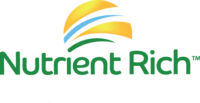The past weekend, I was was nutrition seminar put on by a local graduate of the Institute for Integrated Nutrition. her name was Rebecca Johns ~ Certified Nutrition & Wellness Coach.
It was at a local Tai Quan Do facility for the athletes their; I went with my good friend Michele Katz.
I had just finished a great bike ride and was ready to get filled up with some exciting insight, not to mention to my surprise… her homemade Protein Bar. This isn’t just any protein bar and certainly not junk packed as “health food”.
Here’s Rebecca’s recipe for “protein bites”.
Ingredients:
- 2C Raw Oatmeal
- 1c Protein Powder
- 1/2c flax seed, ground
- 1/2c wheat germ
- 2c trail mix – almonds, cashews, dried fruit, etc
- 1/2c ground walnuts
- 1/2c coconut
- 1c honey
- 2c peanut butter
Procedure:
- Mix all ingredients together and press in a baking pan. Cut in 24 bars
- Calories 310
- carbs 31 g.
- fiber4.2g
- protein 11g
I want to share of the best insights she focused on that day.
In the recipe above, when you look at the quality of the ingredients you know you are getting a Nutrient Rich Food and the information provided from calories to carbs, to fiber, to protein is just plain straight forward.
So to that extent, reading the nutrition data on the label is useful.
When it is not as useful is when you are reading a label for nutrition data about ingredients that you can’t spell, or decipher. That’s when nutritional data is often misleading. “Net carbs”, “real carbs”, serving sizes, calories, definitions, sodium, type of fat etc; there is so much label manipulation that goes on, it would boggle your mind.
You can learn all the ins and outs of label reading here; the guru is Jeff Novick of the National Health Association.
The first and most obvious question would be, are you eating predominantly nutrient rich calories or nutrient poor calories? The difference in terms of the consequences in your body is huge, not just in terms of weight, but in terms of your health your ability to function and perform well.
See the Food Class System to see the difference between a nutrient rich food and a nutrient poor food and remember this, it’s not just the calories that count; it’s not even just the nutrients that count, it’s the quality of the nutrients that count!
Are you eating, health promoting protein, real food carbohydrates, essential fat…?
What’s the point of eating whey protein or huge amounts of animal protein, or synthetic vitamins… if these sources of nutrients are of a poor quality?
Despite the nutrition data, the quality of nutrients from those foods and the negative impact they can have on your system if eaten in significant quantities, are bound to have negative health consequences.
In this seminar, Rebecca was talking about pre workout and post working meals, because she was talking to an athletic group of people. I thought her points were incredibly authentic… here we just a few that I am paraphrasing.
- It’s not just the nutrition data, it’s the quality of the ingredients that matter.
- How do you feel when you eat one food versus another?
- Do you know that you can feel and perform allot better when you are eating real food and food that promotes your health in an optimal way? You’ll know once you make transition.
- Hydration comes from water, but also from the food you eat. Eat allot of fruits and vegetable and you’ll be drinking all day.
- Coconut water, is one of nature’s best re hydrants
- Managing your personal energy level is incredibly important to being able to take care of yourself and perform and we’re not just talking your food energy, but your vital energy.
- Food Matters – she played this video, and I suggest you watch this video online.
- Make the Protein Bites above!
This is so exciting to see the Nutrient Rich food revolution taking such a hold, in martial arts dojangs to the mainstream. And one of the lessons in this food revolution in this… food quality is everything.
Nutrient Rich is not a specific diet you have to stick to, it’s a quality standard you maintain… more on that in my next post.
Nutrition Data must start with food quality first, if the food quality is there, you can be sure that the nutrition data is actually true.


Nice post, thanks for sharing this wonderful and usefull information with us.
Green Tea
Really?? RAW oats? Ok, John Allen. I'm trying this and will get back to you. I just ran out of local honey. Gotta get a refill. What kind of coconut do you suggest/recommend? And what protein powder do you like best?
Thanks for the recipe & always being so inspiring. I ate 90% nutrient rich today & I feel amazing.